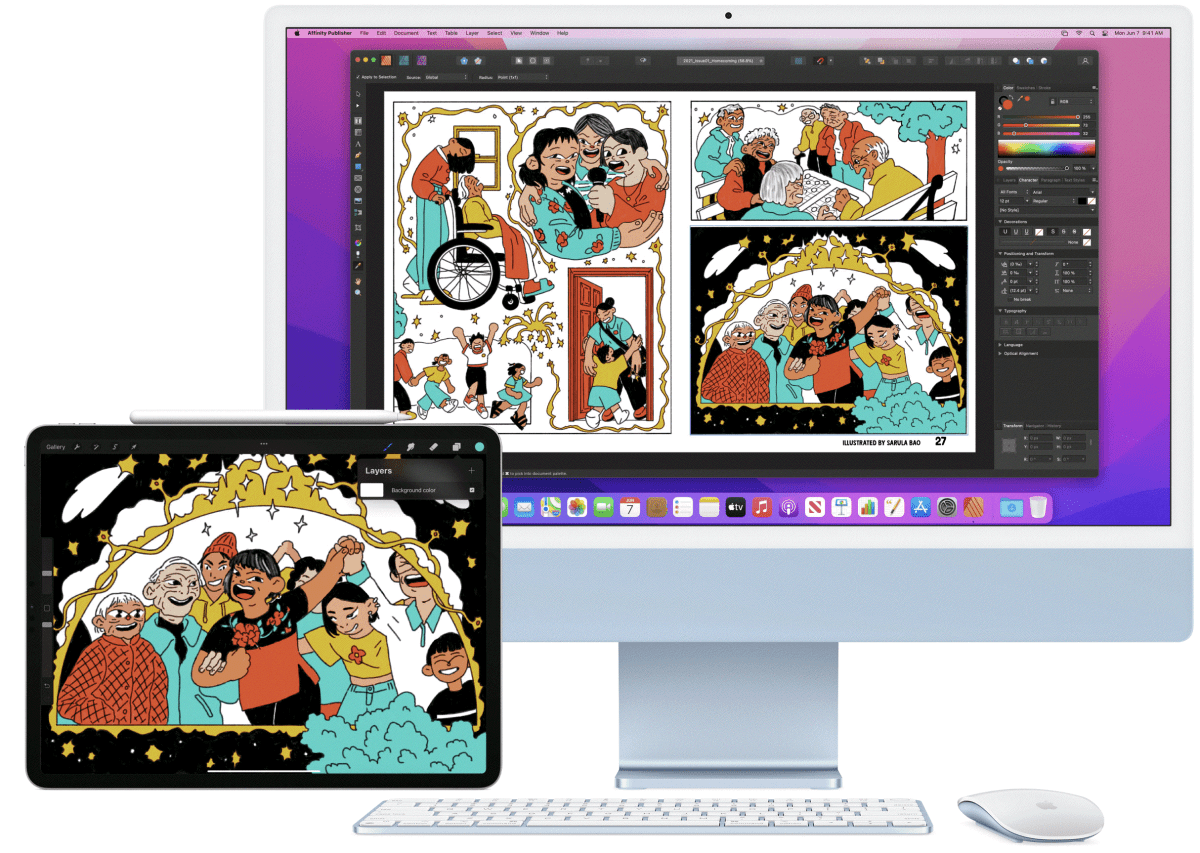In about three weeks it’ll be winter in Cupertino, and while the turn of seasons in the Bay Area usually doesn’t amount to much beyond wearing a slightly heavier hoodie, the turning of the seasons also represents an expiration date for one of Apple’s most springtime promises.
Several features of iOS 15 and macOS Monterey announced way back in June didn’t arrive at launch. We got SharePlay in iOS 15.1, iCloud+ features are still in beta, and ID cards have been delayed till 2022. But Apple still claims that Universal Control is shipping “later this fall,” which means we’ve got less than a month before Apple’s promise to ship perhaps the best feature in Monterey, is in arrears.
Sure, three weeks is a long time… until you consider that Apple has yet to even ship a beta version of macOS and iOS that supports this new feature. If the feature isn’t even ready to be previewed by brave souls, how will it be ready for us all by mid-December? It’s tricky.
Nobody likes waiting until Christmas morning to unwrap the presents under the tree, especially the one that’s literally shaped like the outline of a new bike. But we don’t get to choose. Apple’s gifts, Apple’s rules.
Waiting is the hardest part
First, a recap: Universal Control is a feature that promises to let the users of multiple Macs, iPads, or both to weld them together into a more seamless experience. It’s not screen sharing, like the Sidecar feature Apple introduced in macOS Catalina, that lets an iPad act like a second display for a Mac. Universal Control lets the iPad remain and iPad, the Mac remain a Mac–but lets all of those devices be controlled by the same input devices and share clipboards and drag-and-drop as if they were the same device.
In some ways, Universal Control is the culmination of several features that Apple has been rolling into macOS and iOS for some time. Universal Clipboard is a major component. There’s got to be more than a little AirDrop heritage in cross-device drag-and-drop. Even input-device sharing, which lets you drive multiple Macs, or Macs and iPads, from a single keyboard and mouse, probably uses remote-access technology to convey keystrokes and trackpad gestures to other devices.
But putting all those features together? That’s tricky. And Apple’s right to be cautious.
 https://b2c-contenthub.com/wp-content/uploads/2021/06/mac911-apple-monterey-universal-control.png?resize=300%2C213&quality=50&strip=all 300w, https://b2c-contenthub.com/wp-content/uploads/2021/06/mac911-apple-monterey-universal-control.png?resize=768%2C546&quality=50&strip=all 768w, https://b2c-contenthub.com/wp-content/uploads/2021/06/mac911-apple-monterey-universal-control.png?resize=1200%2C853&quality=50&strip=all 1200w, https://b2c-contenthub.com/wp-content/uploads/2021/06/mac911-apple-monterey-universal-control.png?resize=1536%2C1092&quality=50&strip=all 1536w, https://b2c-contenthub.com/wp-content/uploads/2021/06/mac911-apple-monterey-universal-control.png?resize=2048%2C1456&quality=50&strip=all 2048w" width="1200" height="853" sizes="(max-width: 1200px) 100vw, 1200px" />
https://b2c-contenthub.com/wp-content/uploads/2021/06/mac911-apple-monterey-universal-control.png?resize=300%2C213&quality=50&strip=all 300w, https://b2c-contenthub.com/wp-content/uploads/2021/06/mac911-apple-monterey-universal-control.png?resize=768%2C546&quality=50&strip=all 768w, https://b2c-contenthub.com/wp-content/uploads/2021/06/mac911-apple-monterey-universal-control.png?resize=1200%2C853&quality=50&strip=all 1200w, https://b2c-contenthub.com/wp-content/uploads/2021/06/mac911-apple-monterey-universal-control.png?resize=1536%2C1092&quality=50&strip=all 1536w, https://b2c-contenthub.com/wp-content/uploads/2021/06/mac911-apple-monterey-universal-control.png?resize=2048%2C1456&quality=50&strip=all 2048w" width="1200" height="853" sizes="(max-width: 1200px) 100vw, 1200px" />Your patience will be rewarded
There was a time, last decade, when Apple would ship new versions of iOS and macOS whether or not all their features were ready for public consumption. It’s become much more disciplined lately, choosing to delay features when they don’t work.
It’s a good decision. I still hear people complaining about new macOS and iOS features that shipped broken–even though they’ve since been fixed. You really do only get one chance to make a first impression, and if a feature doesn’t work reliably, users will abandon it and never go back.
Apple has also raised the difficulty level with Universal Control in a way only Apple could. The feature, as announced, will essentially have no user interface. You should be able to set one device next to another, and then push the pointer on your Mac over to the adjoining screen, where it will pop into view. Of course, in the background, your devices are checking for proximity via wireless networking, and the direction you choose to “push” the pointer off the edge of the screen will reveal whether that nearby device is to the left or the right. It seems simple, but it takes an enormous effort to make something like that appear effortless. It would be a lot easier to make users push a button, find a nearby device, confirm it by clicking, go to the other device and click to confirm, drag to indicate the arrangement of devices… that’s the old school way of doing it, and I think it’s great that Apple wants this feature to be less hands-on and more intuitive.
I don’t know if Universal Control will make it to all of us by the first day of winter, even in beta form. But I’m still excited about the possibilities. I’ve got an M1 MacBook Air I keep closed a few feet away from me most of the time–but what if I could control it easily from the same keyboard and trackpad I use to drive my iMac. I was recently traveling with a MacBook Air and a 12.9-inch iPad Pro, and it sure would’ve been nice to be able to use both of those devices with a single keyboard and trackpad–while still letting my iPad be an iPad and not just an external Mac monitor.
Universal Control is ambitious. It builds on tech Apple has been adding on to macOS and iOS for years now. And it promises to make life with multiple open Apple devices much better. Is it annoying to have to wait six months since it was announced to try it out? Of course. But you know the saying. Good things come to those who wait. And so we wait.





